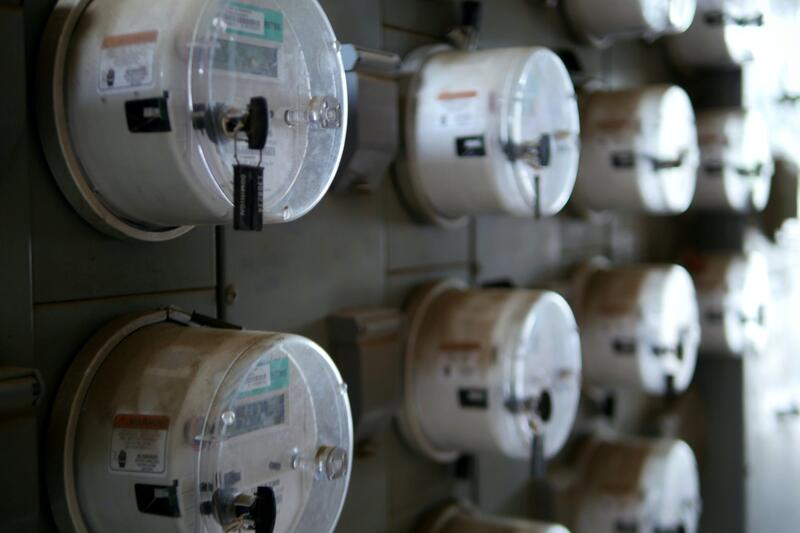Strategies for Achieving Decarbonization in Electricity, gas, steam and air conditioning supply: A Deep Dive
This article explores various strategies for achieving decarbonization in the electricity, gas, steam, and air conditioning supply industries, providing a deep dive into their feasibility and effectiveness.

The electricity, gas, steam and air conditioning supply sector is one of the largest contributors to carbon emissions globally. According to the International Energy Agency (IEA), this sector accounted for 42% of global energy-related CO2 emissions in 2019. Decarbonisation in this sector is therefore critical to achieving global climate goals and mitigating the effects of climate change.
What is Decarbonisation in the Electricity, Gas, Steam and Air Conditioning Supply Sector and Why is it Important?
Decarbonisation in the electricity, gas, steam and air conditioning supply sector involves reducing or eliminating the use of fossil fuels and transitioning to renewable energy sources. This includes the generation, transmission and distribution of electricity, as well as the production and distribution of gas, steam and air conditioning.
The importance of decarbonisation in this sector lies in its significant contribution to global carbon emissions. The burning of fossil fuels such as coal, oil and gas for energy production releases large amounts of carbon dioxide into the atmosphere, contributing to the greenhouse effect and global warming. Decarbonisation is therefore crucial in reducing these emissions and mitigating the effects of climate change.
What are the Main Sources of Carbon Emissions in the Electricity, Gas, Steam and Air Conditioning Supply Sector?
The main sources of carbon emissions in the electricity, gas, steam and air conditioning supply sector are the burning of fossil fuels for energy production. Coal is the most carbon-intensive fossil fuel and is responsible for the largest share of carbon emissions in this sector. Oil and gas also contribute significantly to carbon emissions.
In addition to energy production, the use of refrigerants in air conditioning and refrigeration systems also contributes to carbon emissions. Refrigerants such as hydrofluorocarbons (HFCs) have a high global warming potential and contribute to the greenhouse effect.
How Can We Reduce Carbon Emissions in the Electricity, Gas, Steam and Air Conditioning Supply Sector?
There are several strategies that can be employed to reduce carbon emissions in the electricity, gas, steam and air conditioning supply sector. These include:
- Transitioning to renewable energy sources: This involves the use of renewable energy sources such as solar, wind, hydro and geothermal power to generate electricity. This reduces the reliance on fossil fuels and therefore reduces carbon emissions.
- Improving energy efficiency: This involves the use of energy-efficient technologies and practices to reduce energy consumption and improve the efficiency of energy production. This includes the use of smart grids, energy-efficient appliances and buildings, and the implementation of energy management systems.
- Carbon capture and storage (CCS): This involves capturing carbon dioxide emissions from energy production and storing them underground or in other long-term storage facilities. This reduces the amount of carbon dioxide released into the atmosphere.
- Transitioning to low-carbon refrigerants: This involves the use of refrigerants with lower global warming potential such as hydrofluoroolefins (HFOs) and natural refrigerants such as ammonia and carbon dioxide.
What are the Challenges Facing Decarbonisation in the Electricity, Gas, Steam and Air Conditioning Supply Sector?
Despite the benefits of decarbonisation in the electricity, gas, steam and air conditioning supply sector, there are several challenges that need to be addressed. These include:
- Cost: The transition to renewable energy sources and the implementation of energy-efficient technologies can be expensive, particularly for developing countries. This can be a significant barrier to decarbonisation.
- Infrastructure: The transition to renewable energy sources requires significant infrastructure investments, including the construction of new power plants and the expansion of transmission and distribution networks. This can be challenging in areas with limited infrastructure.
- Reliability: Renewable energy sources such as solar and wind power are intermittent and can be affected by weather conditions. This can make it challenging to ensure a reliable and consistent supply of energy.
- Political will: Decarbonisation requires strong political will and commitment from governments and policymakers. This can be challenging in countries where there is a lack of political will or where fossil fuel industries have significant political influence.
What are the Implications of Decarbonisation for the Electricity, Gas, Steam and Air Conditioning Supply Sector?
Decarbonisation in the electricity, gas, steam and air conditioning supply sector has several implications for the industry. These include:
- Job creation: The transition to renewable energy sources and the implementation of energy-efficient technologies can create new job opportunities in the industry.
- Innovation: Decarbonisation requires significant innovation and technological advancements. This can drive innovation and new product development in the industry.
- Market opportunities: The transition to renewable energy sources and the implementation of energy-efficient technologies can create new market opportunities for companies in the industry.
- Reduced carbon emissions: Decarbonisation in the electricity, gas, steam and air conditioning supply sector can significantly reduce carbon emissions and contribute to global efforts to mitigate the effects of climate change.
In conclusion, decarbonisation in the electricity, gas, steam and air conditioning supply sector is critical to achieving global climate goals and mitigating the effects of climate change. This can be achieved through the transition to renewable energy sources, the implementation of energy-efficient technologies, and the use of low-carbon refrigerants. However, there are several challenges that need to be addressed, including cost, infrastructure, reliability, and political will. The implications of decarbonisation for the industry include job creation, innovation, market opportunities, and reduced carbon emissions.